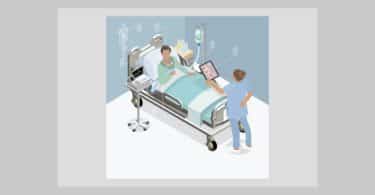Striving For Completeness
Since the last article about this website database in HPATHY.COM as of 2011 (see first article here) it has developed a lot, so it makes sense to have another look at it. First of all, the amount of material has changed tremendously. There are now three times as many substances and four times as many provings included. The database currently (8/2018) includes: 8322 single remedies in their natural systematic position as substances, and 6007 entries on remedy provings with their exact source, related to 2381 proved remedies.
As part of a research program of Campace, which required a full list of available homeopathic remedies, the database has been extended to contain almost all remedies that are available in potentized form. Of course there will be some manufacturers or pharmacies here and there who offer remedies we have not heard of, but we estimate that with these more than 8300 substances we have collected quite a comprehensive list of the worldwide supply. And some 8000 of these remedies are given with the adresss where you can order them.
Together with the 6000 entries on original proving sources, this is the most comprehensive database that homeopathy has ever had, now containing all old and new provings since Hahnemann. You can see with one glance and a high certainty whether for a certain substance there is a proving in existence or not.
Of course the number of over 2300 proved remedies does not mean that there are so many remedies with full homeopathic provings. Most are, but also many just have some primary material in the old literature that was collected somewhere, some observations mentioned in Allen etc.
All the old works of Allen and Clarke, the Bradford Index (with all provings until 1900) and several old magazines have been completely included in the meantime. Those who read German may be interested to know that all the old issues of the AHZ, the oldest homeopathic magazine, are being searched for provings. Even for a “genuine” homeopath shunning all developments later than Boenninghausen, this is a valuable ressource, because working with original provings was one of the main demands of the old masters.
Unfortunately much of the older material poses problems when it comes to substance names, which are often unclear in comparison to our modern naming. So the database contains an online version of the Bradford Index that we have completely revised and corrected regarding the names. Some of the remedy names in Benoit Mure’s classic ‘Brazilian Pathogenesis’ had to be carefully researched to retrieve the original substance because he had a very “creative” way of naming the animals or plants he proved, for instance using the name of a prover or the place.
As we are making an effort to reach completeness regarding remedies in use as well as remedy provings, we appreciate every hint for sources that we haven’t found yet. The website also publishes lists of remedies for which there is no manufacturer known today but which are mentioned in the literature, and of remedies which are offered by pharmacies where the substance stays unclear. The links to these lists you find on the Substance Intro page. All help on these is appreciated and free weeks of subscriptions are granted for substantial new findings.
Another new feature is the more than 9000 references to materia medica or case literature for more than 1000 remedies. In contrast to the proving, this list is very far from being comprehensive and probably will never be. It’s just a help to find sources in several magazines that have been extracted for many years by our Austrian colleague Dr. Peter Koenig, who generously gave his collection to be published on provings.info.
Certainly one shortcoming of a website that claims for completeness is in languages. All systematics are given in English and German language only, and material of pharmacies outside these language areas are not fully covered. Although provings are presented in their original languages (thirteen different ones by now) there is a lack of good translations. We may give one hint here: For those who want to read homeopathic texts outside their mother tongue there is now a free online translator which produces clear and readable and mostly correct translations: DeepL.com. You simply copy your text into a box and read the desired language in the next in a quality that has nothing in common with the Google translator or others.)
Recently the menu of the website has been renewed and is now a bit more clearly arranged. You can still see that it is more than ten years old and not built with latest online technology or graphics. For example it is not adaptable to portable terminals.
The plant system is still based on Cronquist – as Yakir also agrees with her plant evolution tables, because the morphologically based taxonomy fits better to our homeopathic approach since it rests on observation and not on laboratory results. Provings.info offers a few tables showing the differences between Cronquist and the APG, but for those colleagues who prefer to work with the genetically based APG system of taxonomy – like Scholten – it would be desirable to have an easier switch between the two systematics.
All these necessary improvements are on our waiting list, but cannot been given priority at the moment. We are looking forward to providing another look at our page for you in a few years time and see what has happened until then.





